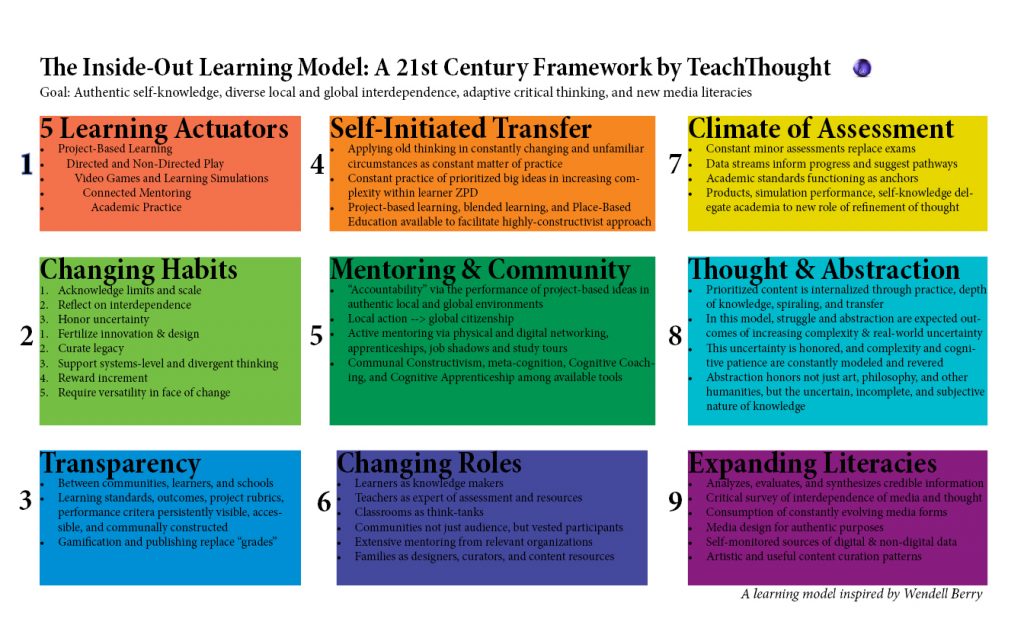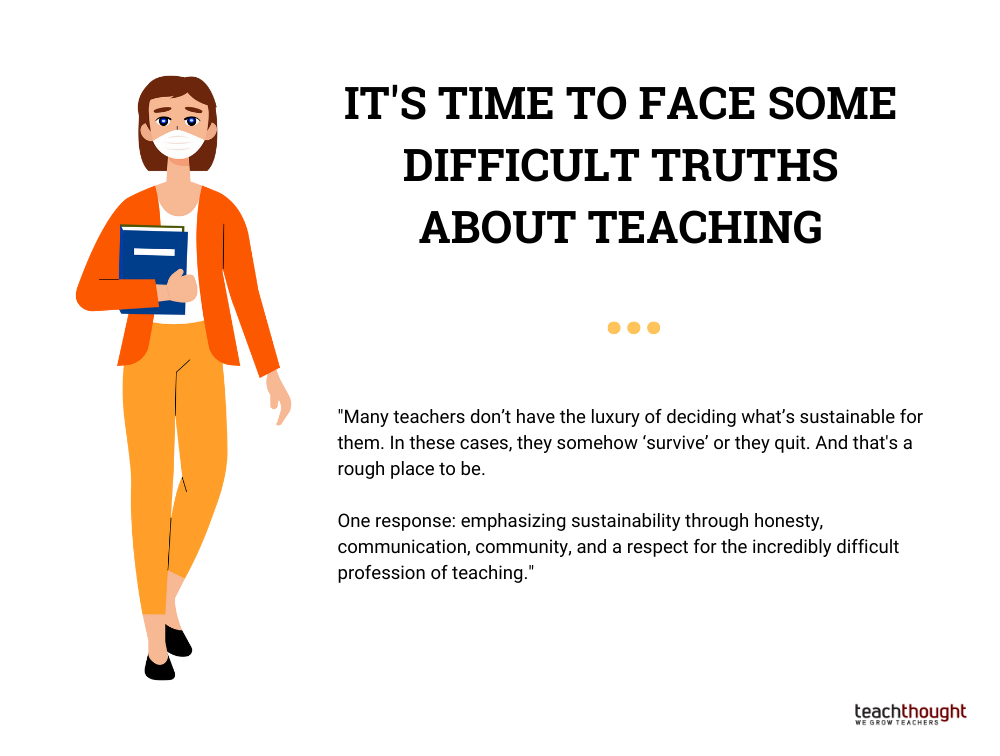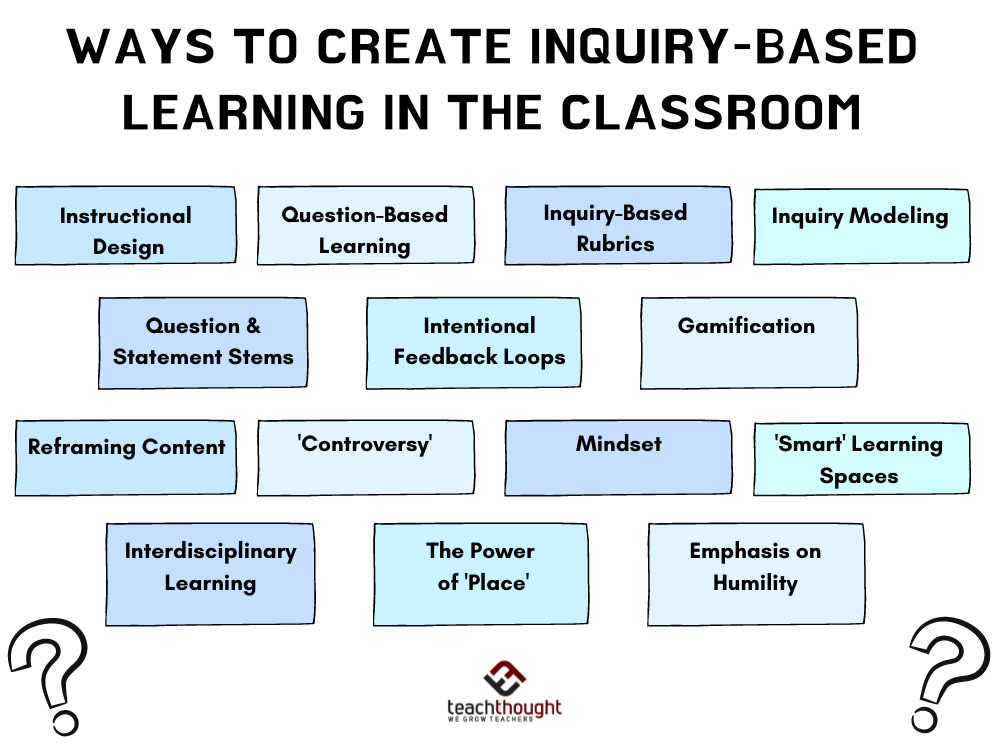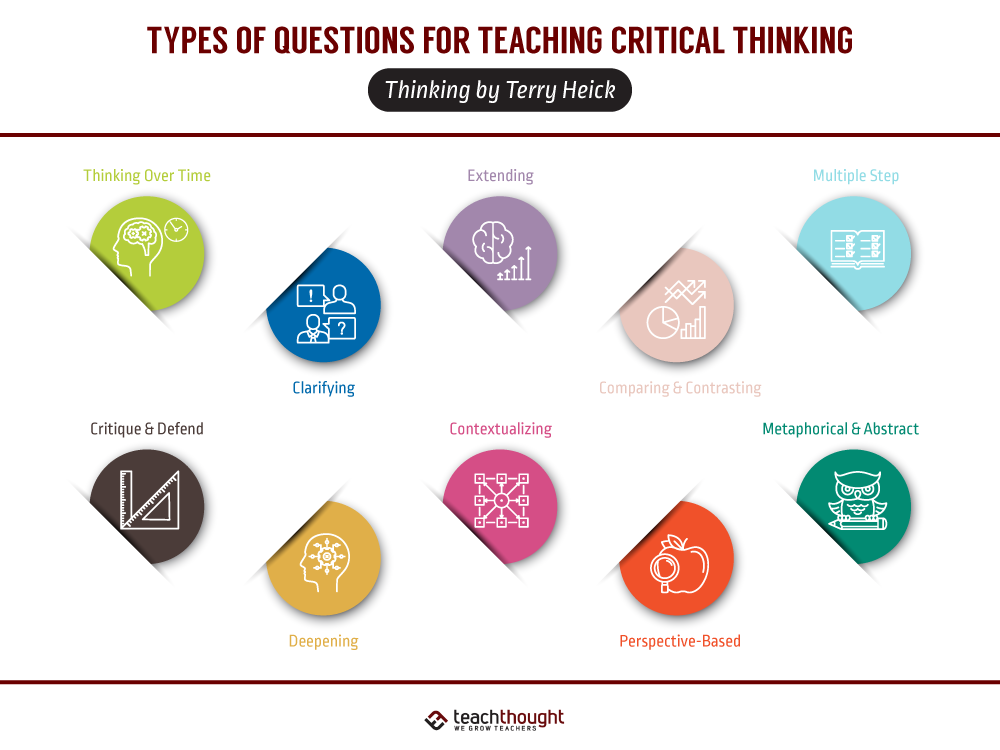by Terry Heick
As a follow-up to our 9 Attributes of 21 st Century Understanding we developed in 2009, we have created an updated framework, The Inside-Out Understanding Design.
The goal of the version is basic sufficient– not pure academic proficiency, however instead genuine self-knowledge, varied regional and worldwide interdependence, flexible crucial reasoning, and adaptive media proficiency.
Deliberately this model stresses the duty of play, varied electronic and physical media, and a made connection in between neighborhoods and schools.
The tried personalization of discovering takes place via brand-new actuators and new ideas of local and global citizenship. An Inside-Out School returns the learners, finding out, and ‘responsibility’ far from academic community and back to areas. No more do schools educate. Instead, they serve as curators of sources and discovering tools and promote the change of the ‘burden’ of finding out back to an extra well balanced perspective of stakeholders and participants.
Below, households, magnate, humanities-based companies, neighbors, mentors, and higher-education institutions all assembling to witness, revere, react to and support the understanding of its very own community participants.
The micro-effect below is raised intellectual intimacy, while the macro-effect is healthier neighborhoods and citizenship that prolongs beyond mere involvement, to ideas of thinking, range, legacy, and growth.
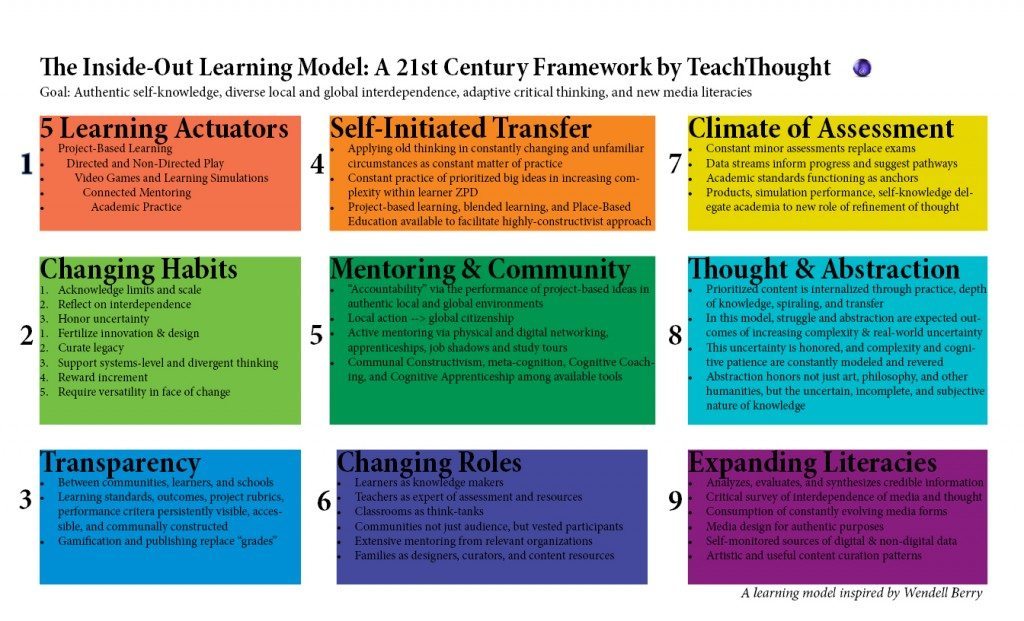
The 9 Domain names Of the Inside-Out Discovering Design
1 Five Learning Actuators
- Project-Based Learning
- Directed and Non-Directed Play
- Video Clip Gamings and Understanding Simulations
- Connected Mentoring
- Academic Practice
2 Changing Routines
- Well-being (for instructors and pupils) as a matter deserving of advancement & & style
- Recognize limits and scale
- Review interdependence
- Honor uncertainty
- Curate tradition
- Assistance systems-level and different thinking
- Compensate increment
- Require versatility despite change
3 Transparency
- Between neighborhoods, learners, and colleges
- Understanding standards, results, job rubrics, efficiency critera constantly noticeable, available, and communally created
- Gamification and publishing change ‘qualities’
4 Self-Initiated Transfer
- Applying old reasoning in regularly changing and strange situations as a continuous matter of technique
- Constant technique of prioritized concepts in raising intricacy within student’s Area of Proximal Development
- Project-based knowing, combined knowing, and Place-Based Education readily available to help with highly constructivist technique
5 Mentoring & & Area
- ‘Accountability’ via the performance of project-based concepts in genuine regional and global environments
- Regional activity– > worldwide citizenship
- Active mentoring by means of physical and electronic networking, instructions, work darkness and study scenic tours
- Communal Constructivism, meta-cognition, Cognitive Mentoring, and Cognitive Instruction amongst available tools
6 Changing Duties
- Learners as knowledge manufacturers
- Educators as the expert of analysis and sources
- Classrooms as think-tanks
- Areas not simply target market, yet vested participants
- Families as designers, curators, and material sources
7 Environment of Assessment
- Consistent small evaluations replace tests
- Data streams notify progression and suggest paths
- Academic requirements focused on and anchoring
- Products, simulation efficiency, self-knowledge delegate academic community to a brand-new function of refinement of idea
8 Idea & & Abstraction
- In this version, struggle and abstraction are expected results of increasing intricacy & & real-world uncertainty
- This unpredictability is honored, and intricacy and cognitive perseverance are constantly designed and revered
- Abstraction honors not simply art, philosophy, and various other liberal arts, however the unpredictable, incomplete, and subjective nature of knowledge
9 Increasing Proficiencies
- Analyzes, evaluates, and manufactures legitimate information
- Vital survey of the connection of media and thought
- Consumption of regularly evolving media kinds
- Media design for genuine objectives
- Self-monitored sources of electronic & & non-digital information
- Artistic and helpful content curation patterns
The Inside-Out Understanding Version Central Learning Theories & & Artifacts: Situational Discovering Theory (Lave), Discovery Learning (Bruner), Public Constructivism (Holmes), Zone of Proximal Growth & & More Well-informed Various Other (Vygotsky), Understanding Cycle (Kolb), Transfer (Thorndike, Perkins, Wiggins), Behaviors of Mind (Costa and Kallick), Paulo Freire, and the total body of job by Wendell Berry
Owner & & Director of TeachThought
